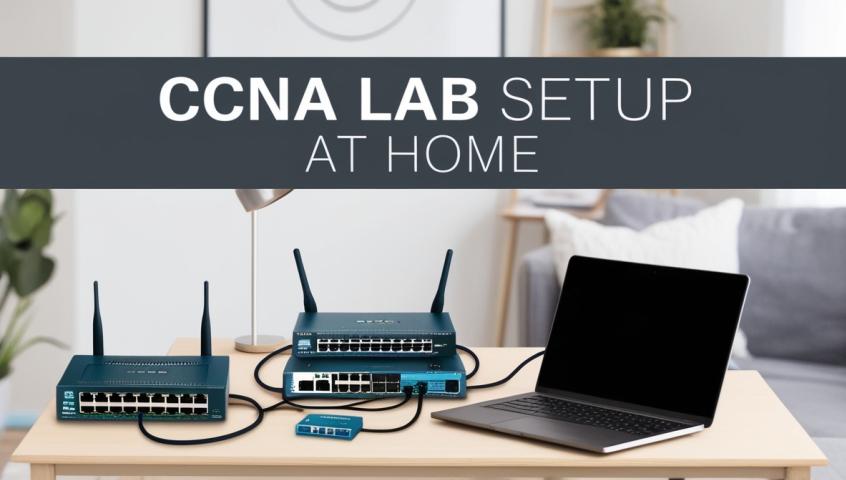When starting out with the CCNA certification, it’s easy to feel overwhelmed by the sheer number of concepts and technical terms involved. CCNA (Cisco Certified Network Associate) covers foundational networking skills that are essential for aspiring network professionals. For those seeking CCNA training in Bangalore, understanding the most critical topics can make your learning experience much smoother and more effective. In this guide, we break down the top 10 must-know concepts for CCNA beginners, simplifying complex topics like VLANs, routing protocols, and subnetting to help you focus on the essentials.
1. IP Addressing and Subnetting
Understanding IP addressing is foundational for networking, as it helps devices communicate within and across networks. Subnetting allows network administrators to divide larger networks into smaller, more manageable sections. Grasping these concepts will not only prepare you for the CCNA exam but will also enable you to handle everyday network configurations with confidence. Key points include IPv4 and IPv6 addressing formats, subnet masks, and calculating subnets.
2. OSI and TCP/IP Models
These models define how data moves through networks, with each layer representing a specific function. The OSI model has seven layers (Physical, Data Link, Network, Transport, Session, Presentation, Application), while TCP/IP condenses them into four. Knowing these models helps you understand data flow, troubleshoot issues, and better interpret how devices communicate on a network.
3. VLANs (Virtual Local Area Networks)
A VLAN allows you to segment a network into separate broadcast domains, improving security and reducing congestion. VLANs enable you to group devices even if they are physically dispersed, providing better control over network traffic. CCNA candidates should be familiar with configuring VLANs, understanding trunking protocols, and VLAN tagging concepts.
4. Routing Protocols (OSPF, EIGRP, RIP)
Routing protocols enable routers to exchange information and select the best path to forward packets. In CCNA, the focus is on protocols like OSPF (Open Shortest Path First), EIGRP (Enhanced Interior Gateway Routing Protocol), and RIP (Routing Information Protocol). Each protocol has different metrics, strengths, and configurations that influence network efficiency, making it crucial to understand their applications.
5. Switching Fundamentals
Switching is essential for establishing connections within a local area network (LAN). Knowing how switches work—like forwarding frames based on MAC addresses and handling data collisions—helps with tasks such as managing broadcast traffic. CCNA covers switch functions, Spanning Tree Protocol (STP) for loop prevention, and concepts like MAC address tables.
6. NAT (Network Address Translation) and PAT (Port Address Translation)
NAT allows private IP addresses to be translated to public IP addresses, enabling devices on a local network to access the internet securely. PAT, a variation of NAT, assigns unique port numbers to each session, allowing multiple devices to share a single public IP address. Mastering NAT and PAT is essential for configuring networks that need internet access without exposing internal IPs.
7. ACLs (Access Control Lists)
Access Control Lists (ACLs) are used to control and filter network traffic, specifying which packets can enter or leave a network. By defining rules in an ACL, you can enhance network security, restrict access to resources, and manage bandwidth. CCNA includes topics on standard and extended ACLs, providing an understanding of how to create and apply them effectively.
8. WAN Technologies (MPLS, VPN, Metro Ethernet)
Wide Area Networks (WAN) connect networks across long distances. In CCNA, you’ll learn about WAN technologies like MPLS (Multiprotocol Label Switching), VPN (Virtual Private Network), and Metro Ethernet. Each technology has specific benefits—VPNs secure remote access, MPLS optimizes routing, and Metro Ethernet connects multiple sites efficiently.
9. Network Security Basics
Security is a critical aspect of modern networking. CCNA introduces network security principles such as firewall configurations, VPN security, and basic intrusion detection. This knowledge equips you with the skills to protect networks against unauthorized access and data breaches.
10. Basic Troubleshooting Tools (Ping, Traceroute, Show Commands)
Troubleshooting tools are essential for network diagnostics and performance optimization. Commands like ping and traceroute help verify connectivity and identify bottlenecks. Additionally, Cisco’s show commands provide valuable information about device configurations and statuses. Familiarity with these tools will streamline your approach to network troubleshooting.
Conclusion
These ten CCNA concepts form the backbone of networking knowledge for beginners. Mastering them prepares you not only for the CCNA exam but also for real-world network environments, giving you the confidence to set up, manage, and secure networks. As networking continues to grow in demand, getting started with a structured learning path is crucial. If you’re looking for the best CCNA training institute to guide you through these essentials and ensure you’re prepared, consider joining a reputable training provider that emphasizes practical, hands-on learning.
